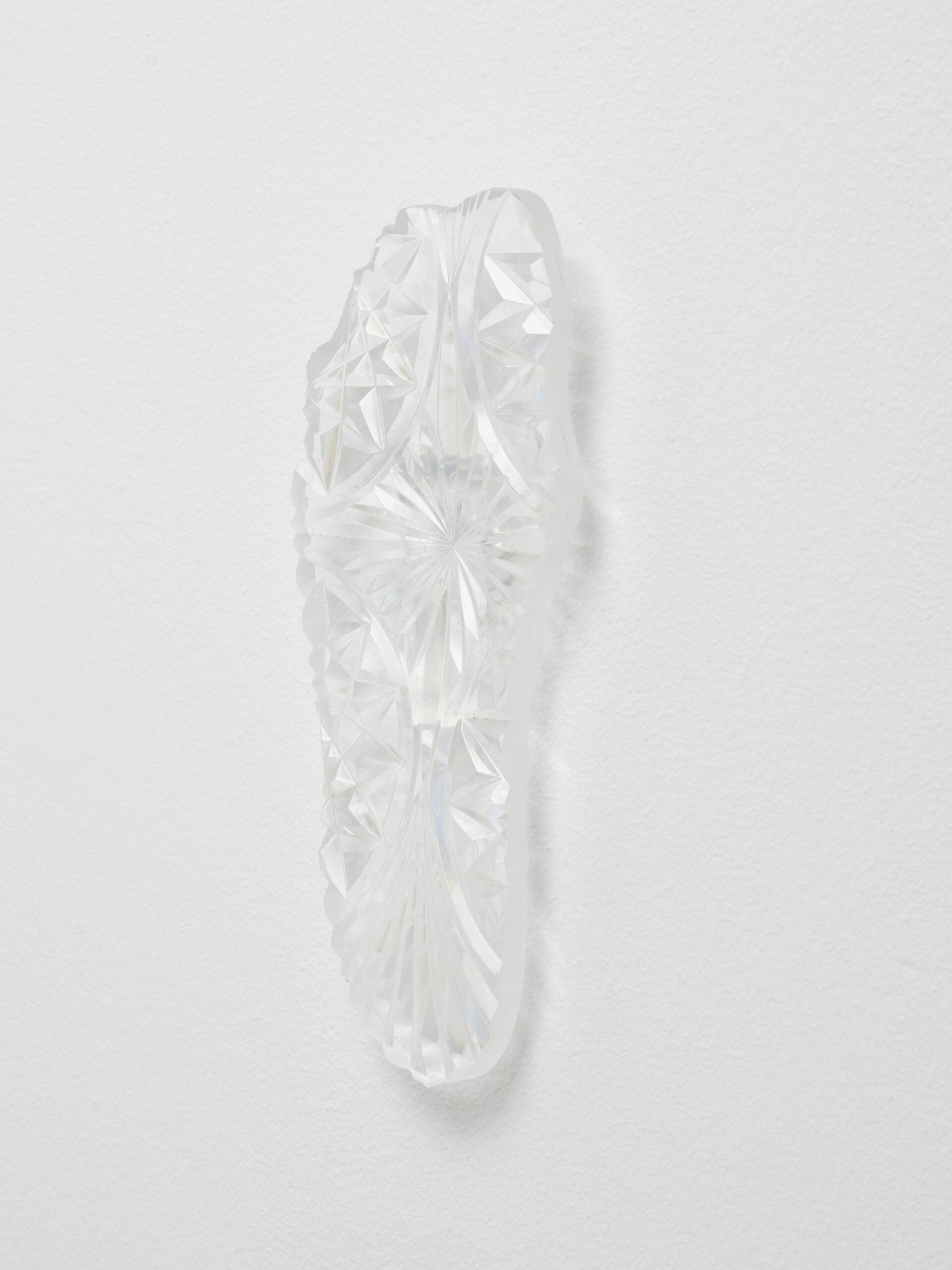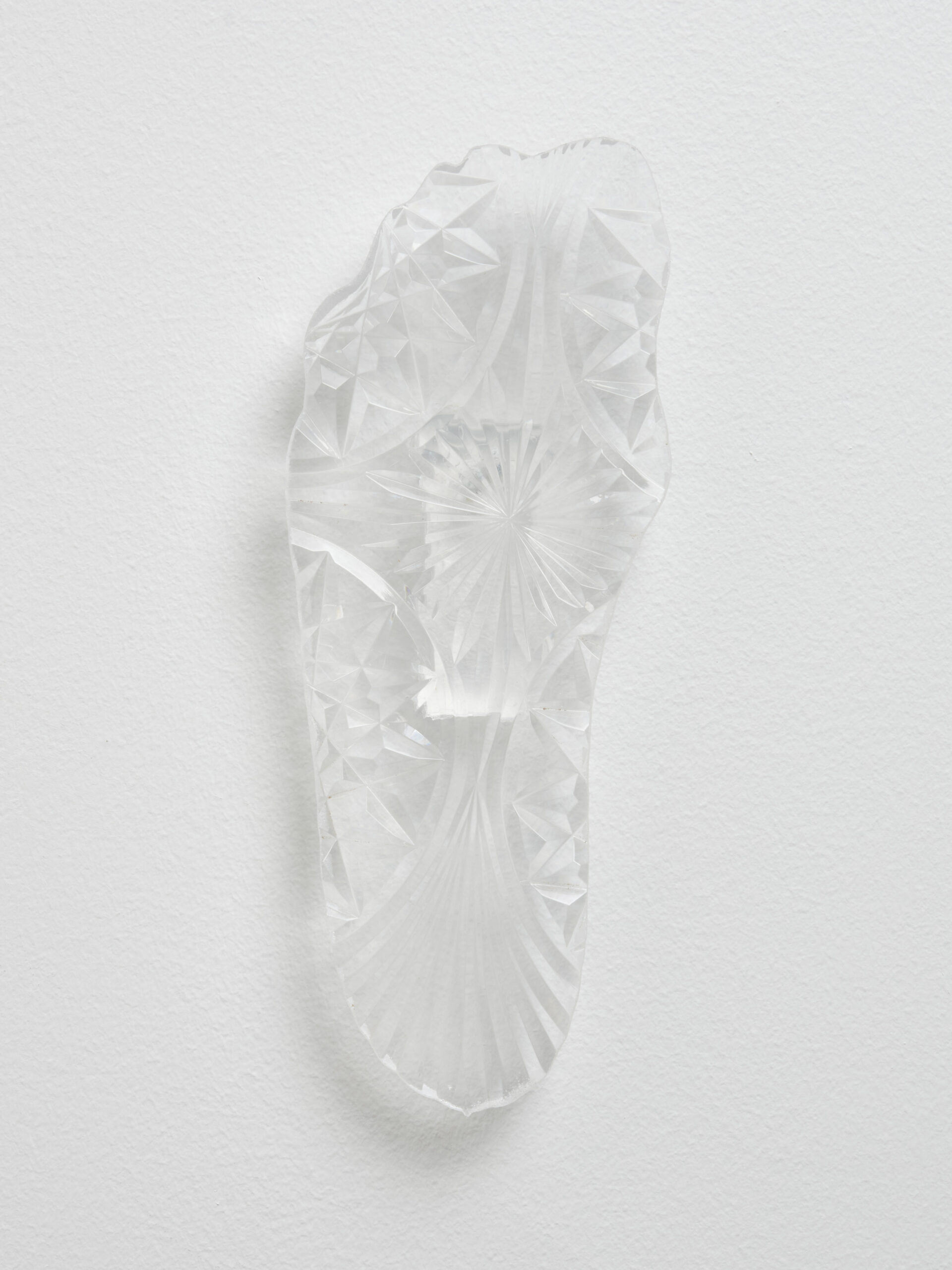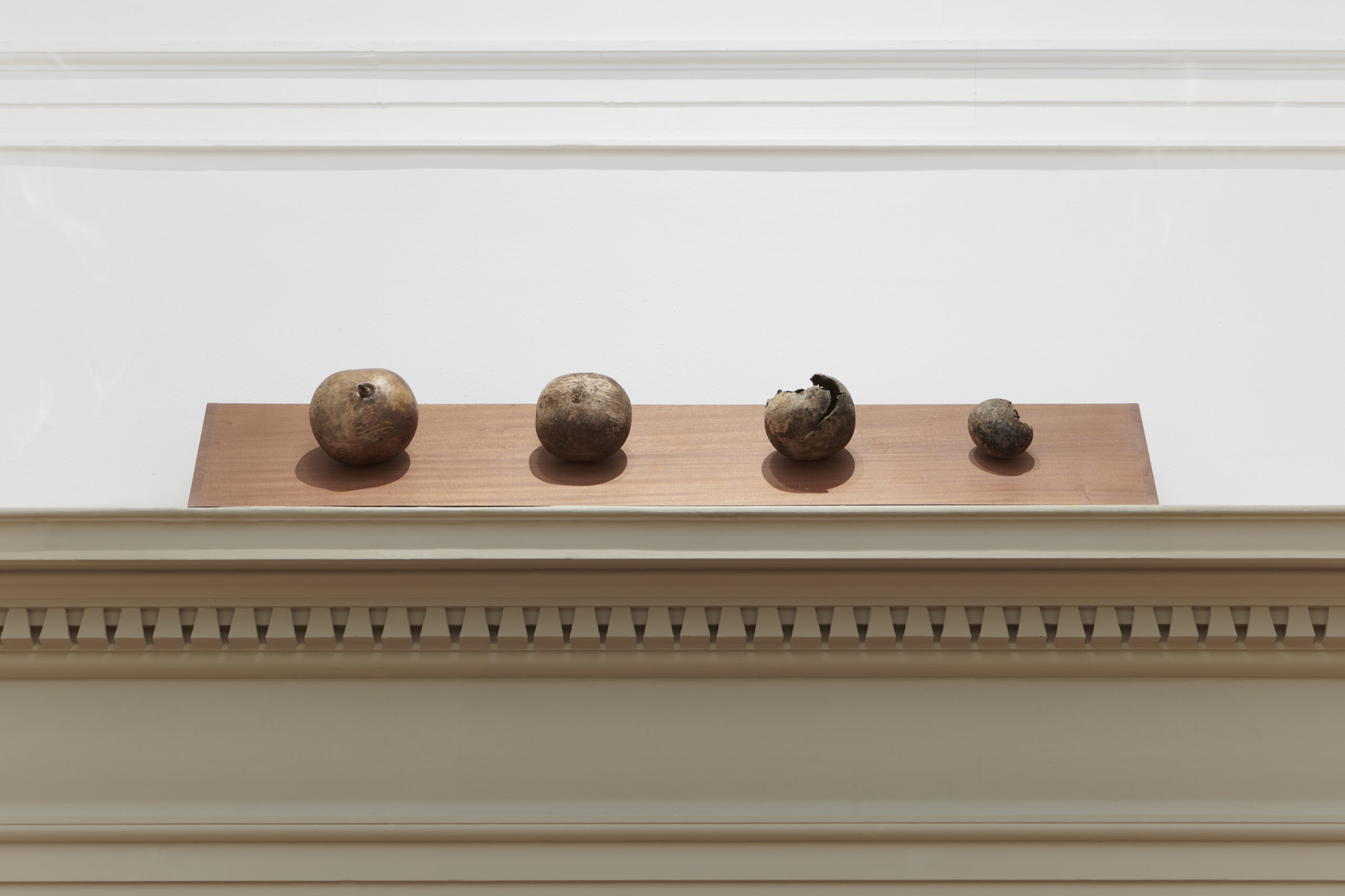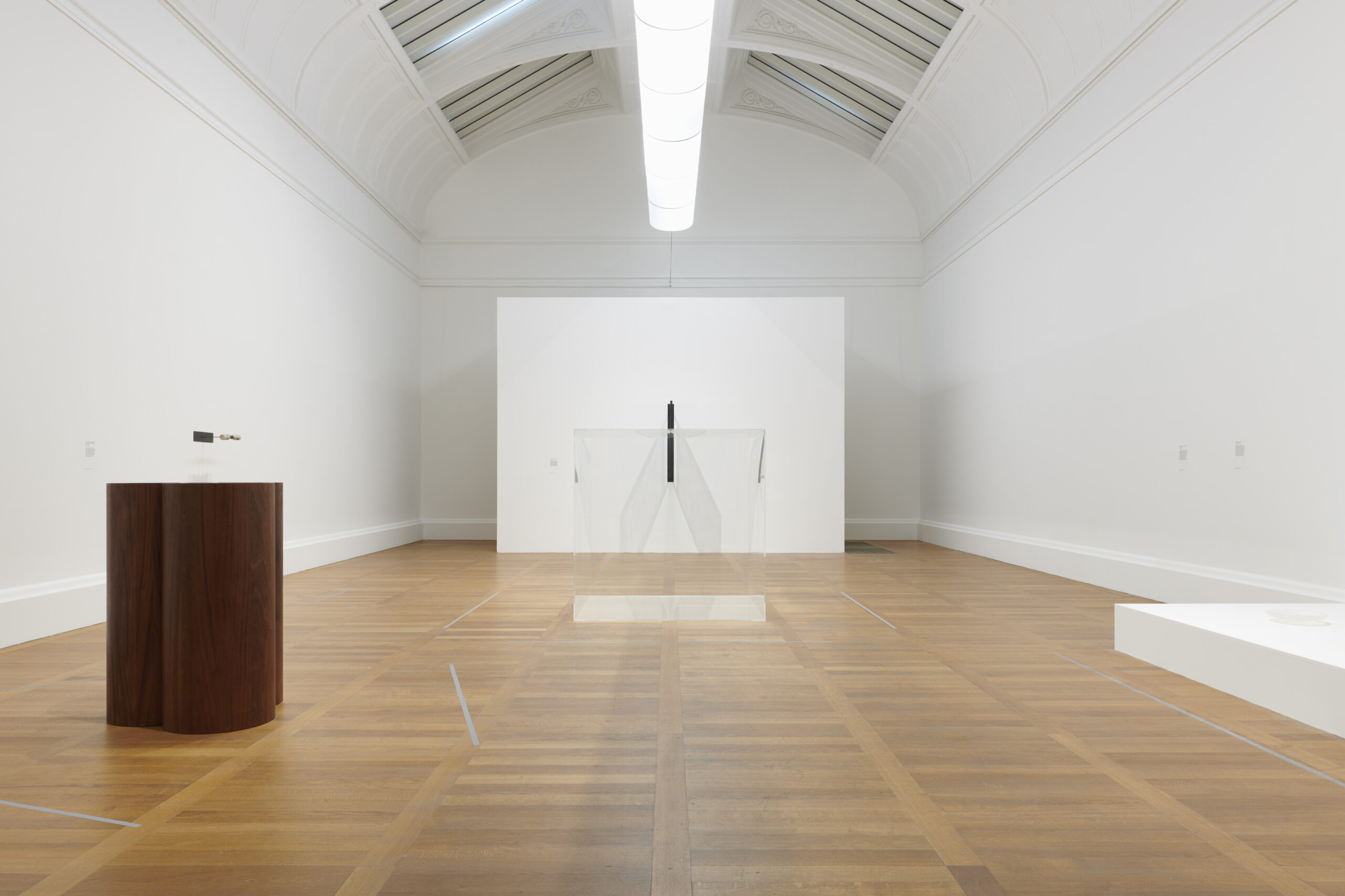
From May of last year to January of this year, a constellation of corporal fragments – eyes, mouth, soul, reproductive organs, hands, feet and lungs — came together at Tate Britain in the evocation of a Black woman’s body. The first solo institutional exhibition of polymath artist Rhea Dillon, An Alterable Terrain, parsed the infrastructural fundamentality of Black female intellectual, physical and reproductive labour within the British Empire’s construction and legacy. Amidst a biennial in which exhibitions of loud feminism have become the de facto institutional modus operandi, Dillon’s presentation constituted a poultice – sociopolitically engaged, yes, but quieter and slower paced – a generous invitation to reflect, breathe, and re-energise oneself for the good intersectional fight.
Consisting of new and existing sculptures, the exhibition was metonymic of Dillon’s profound penchant for storytelling via abstraction: the deployment of subtly referential materials and formations in allowance of the viewer’s own coming-to-relation with the work. The complexity of the themes enfolded in the minimalist sculptures has been levied as both the power and the downfall of the work insofar as additional reading is required to unearth the underlying histories that drive the sculptural outcomes. Appropriate then, that Dillon has produced a publication of the same name, in accompaniment to and expansion upon the exhibition: an elucidation of the thoughts and thinkers, concepts and creative discoveries upon which the body of work draws. On the heels of the publication of a special edition of An Alterable Terrain I had the pleasure of sitting down with Rhea Dillon for a wide-ranging discussion encompassing the “landscaping” of Blackness, the difference between envy and jealousy, and the point at which the self comes into writing, and art comes into the self.

One could be led to view Dillon’s penchant for symbolic representation as a clear side-taking in the historic storm of contention that has swarmed around Black abstraction; the 1960s and 70s prioritisation of figuration as a route to capturing the black experience that led to the levying of pandering to western modes at artists such as Sam Gilliam and David Hammons. For Dillon, however, the concentration of Blackness as a new contemporary landscape – this staking of place – feels symptomatic of the postcolonial project: “I don’t see “figuring” Blackness as particularly western, or abstraction as disturbing a particular vision of Blackness.”
Dillon’s practice engages with the “rules” of representation, operating in the interstice between a uniquely Black ontology and an ontic Blackness – a remit that includes the masterful reclaiming of the tenets of canonic Western materiality and sculptural form, a form of subversion via updating. The entry point into recapitulation is always the written word – “I think about society through linguistics, and its own grammar, for instance, the difference between blackness and Blackness.” Encountering canonic writing is a first diction; to be able to enter into conversation with someone’s writing, or with them as people, and build upon it is deemed a gift by the artist.



The writing within the publication An Alterable Terrain is an ode to the centrality of this notion to Dillon’s practice – bringing together the words of Pat Noxolo, Barbara Ferland, Zoé Samudzi, Vanessa Onwuemezi, Françoise Vergès, Katherine McKittrick and Martine Syms. Vergès essay, in particular, frames a feedback loop of mutuality – a response to Dillon’s response to a lecture delivered by Vergès on breath in 2022, expanding on an essay written by the French political scientist and historian for eFlux journal: ‘Capitalocene, Waste, Race and Gender.’
Discussing geography in relation to air and (racial) ecologies, Vergès’ disquisition “flourished An Alterable Terrain.” A graduate of the Institute for Art and Olfaction, Dillon is enamoured by “air, aura, smell…” with olfaction serving as both direct and indirect inspiration. “One’s sense of smell is colloquially considered as the last or a forgotten sense, yet it informs so much. It’s the sense most closely and directly linked to memory, with the power to instigate and even control memory.” The body of work is an exercise in the challenge of societal interpretation of the black, queer body and experience within the UK. With the recognition that the digital age has normalised concentration via two screens – one’s device, alongside one’s physical vision of the world – air as a non-tangible medium becomes fertile ground: “We can’t control it, and it can’t control us, we can only respond.” The exploration of aura comes to hold greater weight within lofty institutional buildings endowed with a deep-rooted physical and perceptual atmosphere. Within An Alterable Terrain Dillon deployed sculpture as a challenge to the Tate Britain – for instance, the inclusion of molasses plates C/leaning Figures (2023) to frame the relationship between the gallery’s founding family and the sugar/transatlantic slave trade.
Forcing the viewer to enact an embedded gesture of prayer – to genuflect and engage from below – to pay witness to her show exemplifies Dillon’s “process of transforming, moving and playing.” Disrupting and guiding the viewer’s movement within the gallery space can be extrapolated to Dillon’s wider interest in the relationship between notions of exile, innate discourse around nations, empire and territory, and the (de)colonial project. Dillon’s relationship to exile is not one that pertains to a sense of physical banishment per se but in relation to the degree to which laws enable or complicate belonging, with specific reference to citizenship as a frontier of inclusion, the crystal footprints. The two cut crystal feet – modelled on the treads of her grandmother and uncle, installed always facing one another – Sole Responsibility: Aged 12, but above (2022) illuminate the “Sole Responsibility Law”: a symptom of the 1971 Immigration Act, which legitimised the notion of black people as second class citizens.

Again, without reading the publication An Alterable Terrain, or the exhibition’s associated interpretation texts, such background would not be obvious – a fact that Dillon enjoys: “I like that the context is not tangible to the quotidian viewer. There’s a mutuality that exists when working with sourced objects that isn’t there in the legacy or process of working with found objects. I enjoy having conversations through objects that already have histories, that enable me to sculpt new narratives and poetic existence to be engaged with.”
The term poethic is key, preferred by the artist to the externally nominally ascribed verb “storytelling”. Dillon first encountered the term when working on her 2021 publication Catgut – The Opera. Introduced to Joan Retallack’s The Poethical Wager in conversation with author and poet Simone White (“I think the best way to think about language and its definition is through conversation”), Dillon qualifies the term as a thickening of language as innately imbued with a Caribbean notion of poetics and narrative. The publication An Alterable Terrain interrogates the possibility of a continuation of poetics in writing, as it approaches a point of dissemblance – the point at which writing becomes less descriptive and less sticky, becomes indirect, and able to speak through movement, light and the spirit.
To reverse the glutinous involves recessing into and reframing archives; when Dillon reads or meets writers, she goes through their reading lists and bibliographies, “filling in the gaps” she readily and humbly admits she is possessed of. So rooted in feminist and queer thought, the legacies of influential texts reverberate throughout her practice; those that informed An Alterable Terrain, much like how the title of the exhibition is cited from Katherine McKittirick’s ‘Demonic Grounds: Black Women and the Cartographies of Struggle’, oscillate within a collection of so-called “Bible books”: “I was drawn to the idea of the Bible as representative of a generic book of “godly” guidance. I was thinking about a collection of books that you might take on a desert island that represent a time machine version of yourself at a specific moment.” Dillon’s “bible books” are all exemplary of her impetus to queer the canon: she names Malorie Blackman’s Noughts and Crosses; Stuart Hall’s Familiar Stranger; the poetry of June Jordan and Derek Walcott; and Stella Dadzie, Suzanne Scafe and Beverley Bryan’s The Heart of the Race – “an emblem of things that exist, that are often absent from declarative or academic texts”, that Dillon has widely gifted to her family members.

Of particular importance is Toni Morrison’s The Bluest Eye – to both the sculptural and published iteration of the body of work. Morrison’s novel is a reckoning in its essence: an exploration of the question of how one might attempt to enact redemption. Drawn to the nuance within Morrison’s writing, the novel also embeds “so many of the realities that [she] had experienced as a child, as a dark-skinned black girl within a western climate.” The Bluest Eye deploys a topography in direct defiance of the idea or precedent of literature: devoid of chapters, the opening section tells you the whole story. Allegiance to the undoing of the expected is what powers the special edition of the book – a broken down, reformed and made-anew iteration of its predecessor. Dillon reveals that the special edition “opens with a text I wrote, deeply inspired by Morrison’s prologue. I’m excited for the reader to see (or not see) the deconstruction” – fragments of Dillon’s introductory text migrates into the opening paragraphs of each contributing writers section, which contain their own additions in turn; the closing text constitutes a permutation of the aforementioned revisions, into novel prose.
The careful contemplation that defined Dillon’s sculptural installations is evident in the publication’s construction; working closely with studio OK-RM, Dillon praises co-founder Rory McGrath: “It was the first time a design team was prepared to run with me, and treat the book as an art object itself.” So too is the reader challenged to run alongside Dillon – to participate in the relocation and reconstruction of literary geography. The mores of exhibition monographs are subverted in the placement of the catalogue of works at the book’s rear, borne upon the satin paper typically used by 20th-century artists. We return to the loci of “Bible books” in the choice to render the remaining pages in papyrus, the varying of the paper’s thickness dominating the sectioning.
Both Morrison and Dillon’s work operate upon a Demonic Ground, as elucidated by Sylvia Wynter (1990). Back at the Tate: the placement of four calabashes directly above the entrance into the gallery – Swollen, Whole, Broken, Birthed in the Broken; Broken Birthed, Broken, Deficient, Whole – At the Black Womb’s Altar, At the Black Woman’s Tale (2023). The title is framed as a two-line poem that ends at the black woman’s altar, at the black woman’s ta(i)l(e), subverting the typical irreverence with which the black female body is treated. The visitor was forced to enter the poem in crossing the threshold – Dillon specifically “wanted the show to end with this work, to constitute an encircling, or embrace by, and engagement with the body.” To be at the woman’s tail is to ask oneself about the nature of the history of black women and what we can dictate. Moving between the past archival and theoretical, to the present, fictionalised and everyday, exhibition and publication – both versions and with all the references enfolded – are in service to the making visible of previously invisible female geographies: “creating one’s reality together.”
Written by Katrina Nzegwu





